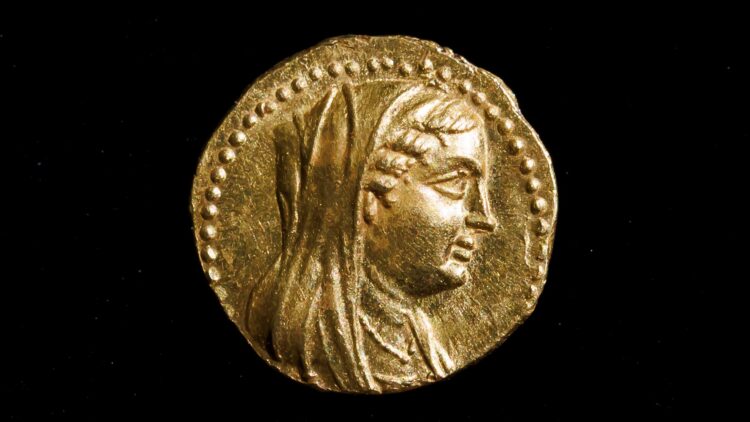While a genocide is taking place in Gaza, in many regions of Israel life goes on as if none of this is happening. In one of these regions, specifically in the National Park of the Walls of Jerusalem-City of David, in the excavation works of the Givati parking lot, there has been the discovery of one of the rarest gold coins, of which there are only 20 in the world. It is the first time that an organized excavation led by the Israel Antiquities Authority has made a find like that of this coin, dated to the reign of Plotomeo III. On one side it shows a portrait of Bernice II (an Egyptian queen) and on the other a cornucopia, a symbol of fertility and prosperity.
Studies believe that this coin was minted in Alexandria and distributed to the Egyptian soldiers who were involved in the conflict between the Ptolemaic kingdom and the Seleucid empire. One of the most striking characteristics is that it had an inscription that said “of the queen”, presenting Bernice as a ruler in her own right and not as a consort of the king. This recognition was characteristic of the dynasty that had Cleopatra as its most recognized figure, which lasted 300 years, the Ptolemaic dynasty.
Jerusalem Walls National Park – City of David
The National Park of the City of David is the oldest archaeological area in Jerusalem, Israel. It houses remnants over 3,000 years old, where biblical sites can be seen, including underground areas and even a visitor center with a 3D movie. The city is home to the Givati parking lot excavation, one of the largest excavations in Jerusalem, where evidence of multiple historical layers of the city has been found, including a large fortification that served as a defense line for ancient Jerusalem 3,000 years ago.
What makes this discovery stand out?
The discovery of this coin is a great piece of news for the archaeologists of Givati. Only 20 of this type have been found worldwide, which adds even more value to it. In fact, this is the first time that an organized excavation led by the Israel Antiquities Authority has made a discovery of this nature. It is a coin made of 99.3% pure gold, dating from between 246 and 412 B.C., during the reign of Ptolemy III. One of the characteristics of the coin is the symbolism it displays. The inscription reads “ΒΑΣΙΛΙΣΣΗΣ”, which means “of the queen”, with a reverse that shows a portrait of Bernice II, an Egyptian queen adorned with a tiara and veil, and wearing a necklace. On the other side, a figure of a cornucopia is depicted, representing fertility and prosperity. Why is this remarkable? The coin recognized Bernice as a ruler in her own right and not merely as the king’s consort, which was quite unusual.
How did this discovery occur?
Rebeca Leanger, the director of the site, was the protagonist of this discovery, and she declared to Israel Hayom how she experienced that moment while sifting through buckets of earth in the Givati parking lot, “I was sifting through buckets of soil that came from the excavation, and suddenly I saw something shine. I immediately shouted, ‘I found a coin! I found a coin!’ In just a few seconds, I realized that my hands were holding a gold coin. It is very exciting. I have been digging in the City of David for two years, and this is the first time I have found gold. There were always people in the excavation who found special discoveries, and I constantly told myself, ‘When am I going to find something special?'”.
This coin is expected to be formally presented at the City of David Research Conference in September. As a final statement, excavation directors Yiftach Shalev of the Israel Antiquities Authority and Efrat Botzer of the Jerusalem Research Center stated, “The discovery of a rare gold coin in Jerusalem, dating back to the time when the Ptolemaic kings ruled the country, provides us with a fascinating insight into the city’s position at that time and the ties that Jerusalem had with the center of government in Egypt”.
Have you heard about the discovery of the tomb of a giant in Azerbaijan?
